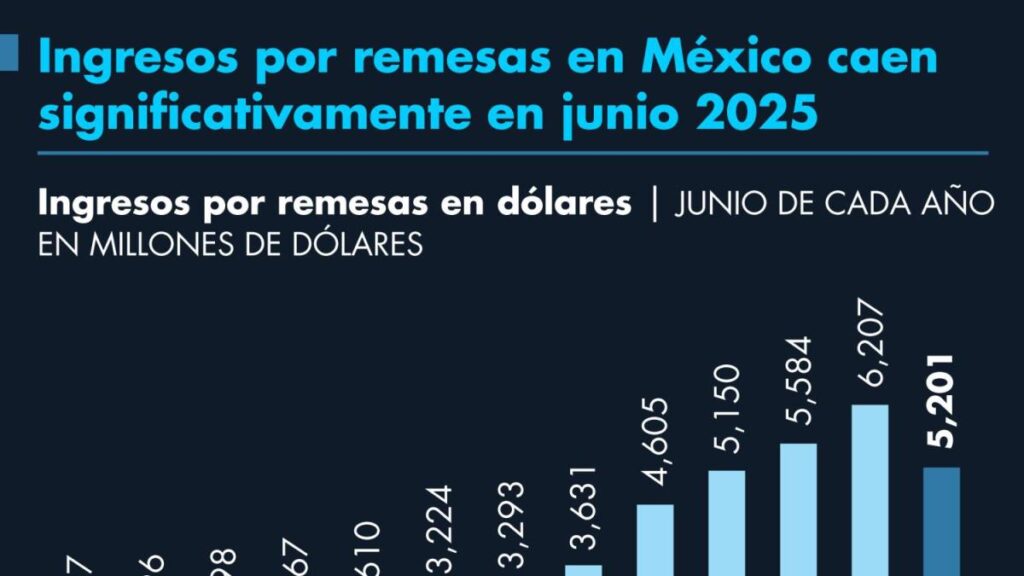Impact of Strict US Immigration Policies on Mexican Remittances
In June 2025, Mexican families received $5,201 million in remittances, according to data from the Bank of Mexico. This figure represents a substantial 16.2% decrease compared to the same month in the previous year.
Historical Context and Significance
This annual decline is the most pronounced since late 2012. The drop in remittances from emigrants comes amidst the tightening of anti-immigrant policies by Donald Trump’s administration in the United States, the primary source of nearly 95 out of every 100 dollars received through remittances.
Average Remittance per Family
On average, each receiving family captured approximately $409 during this sixth month of the year.
Key Questions and Answers
- What are remittances? Remittances refer to the funds sent by migrant workers to their families in their home countries. In this context, they are crucial for many Mexican families.
- Who are the primary senders of remittances to Mexico? Nearly 95 out of every 100 dollars sent to Mexico as remittances originate from the United States.
- What factors have contributed to the recent decline in remittances? The strict immigration policies implemented by the Trump administration in the U.S. have negatively impacted the flow of remittances to Mexico.
- How significant is this decline in remittances? The 16.2% decrease in June 2025 remittances is the most pronounced annual decline since late 2012.
Broader Context and Implications
Remittances play a vital role in the Mexican economy, often accounting for a substantial portion of foreign currency inflows. They are a critical source of income for many families, contributing to local consumption and economic growth. The recent decline in remittances due to stricter U.S. immigration policies could have far-reaching consequences for both Mexican families and the broader economy.
The significance of remittances extends beyond their economic impact. They represent a tangible link between migrant workers abroad and their families at home, fostering social cohesion and providing a safety net for those left behind. The decline in remittances may thus not only affect living standards but also alter the dynamics of migration and integration.
As the U.S. continues to grapple with immigration policy, the ripple effects on remittances in Mexico serve as a reminder of the interconnectedness of migration policies and their global economic and social implications.






